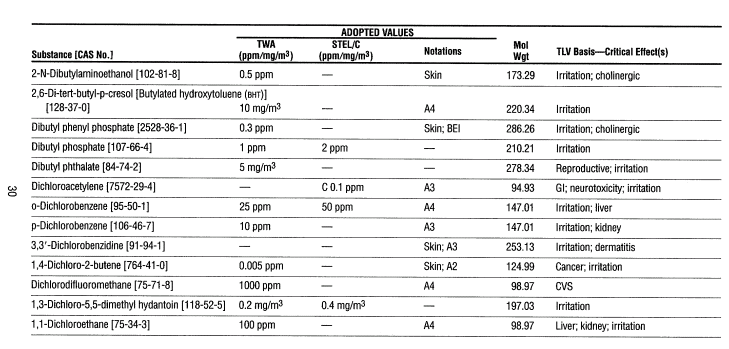
Workplace Health.
Let's start by looking at a page out of the TLV book. The CAS No. you are familiar
with. The "Substance" is the common name of the chemical.
The TWA is the "time weighted average," usually the concentration
averaged over an eight-hour day. For example, if you are exposed to no styrene
(0 ppm) for 7 hours of the day, then are exposed to 80 ppm for one hour, your
8-hour TWA is (guess before you click)
Sometimes, a Short Term Exposure Limit (STEL) may be listed. The STEL is a 15-minute
TWA that should not be exceeded. A ceiling limit (C) is a concentration that
must not be exceeded at any time. A skin notation means that skin exposure is
significant in contributing to the overall exposure. The notations A1, A2, A3,
A4 refer to the carcinogenicity of the compound. A4 means it is not classified,
too little information, A1 means definite human carcinogen. The molecular weight
is useful to translate ppm to mg/m3, a task I won't ask you to do.
The last column explains the reason for the TLV, usually a health effect. Note
the vast difference in the TLV concentrations. The difference between the 4th
to last and 3d to last is 6 orders of magnitude.
NEXT